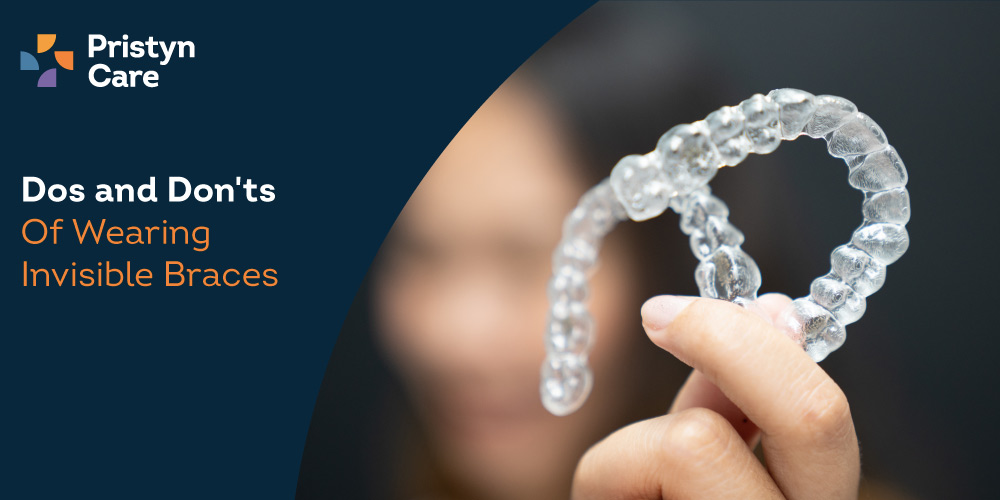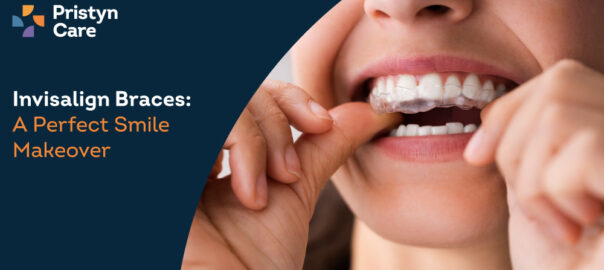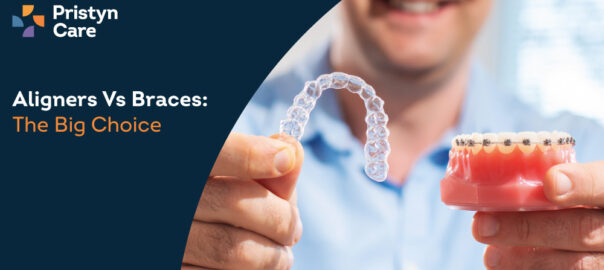![]() Views: 267
Views: 267
Clear Aligners – The Dos And Don’ts Of Invisible Braces
If you're looking to straighten your teeth, traditional metal and wire braces are no longer the only choice available to you. These days, there are teeth aligners, also known as invisible aligners, that can be obtained from a dentist or orthodontist. Clear or invisible aligners offer a discreet alternative to braces, and many people find them more...
comfortable, convenient, and affordable compared to traditional braces. Read moreIn fact, research suggests that aligners also work faster than conventional braces, which serves as an added advantage. Clear aligners, although safe and effective, need to be maintained. Proper maintenance of these dental devices and keeping in mind the dos and don'ts of clear aligners is essential for ensuring minimal complications in the process and maintaining proper oral hygiene. In this blog, we'll look at how clear aligners work and the dos and don'ts associated with these dental devices. .
Dedicated Support at Every Step!
Our Doctors are available 24 hours a day, 7 days a week to help you!
Table of Contents
What Are Clear Aligners?
Clear aligners have become the preferred choice for many young patients seeking orthodontic treatment. These aligners are made of transparent plastic and come in tray form, customized to fit the patient's teeth. An orthodontist, a specialized professional, is needed to create and oversee the treatment plan using 3D imaging technology based on the patient's smile and needs.
Clear aligners use the natural motion of the teeth to align them and ensure a more aligned and healthy appearance. Aligners help teeth gradually shift in the right direction. Nowadays, aligners are linked to special software. This software helps track how the aligners are working and what the progress of the teeth is like.
While aligners are removable, the doctors generally suggest wearing aligners for 20-22 hours a day, and the duration of the treatment depends on the severity of the dental issues. Another great thing about these aligners is that they fit properly on the teeth, and the patients gradually start considering them a part of the body.
No Cost EMI, Hassle-free Insurance Approval
Who Requires Clear Aligners?
Dental issues are common these days and can affect anyone, irrespective of how young or old they are. Clear aligners are suggested to individuals with mild to moderate orthodontic issues who are seeking to correct their smile. Owing to their clear appearance, these aligners are often the first choice of teenagers and adults seeking a more discreet and comfortable alternative to conventional braces- which are typically too apparent.
Clear aligners serve as an effective solution for various dental issues, including crooked teeth, gaps between teeth, overcrowding, and bite irregularities such as overbites or underbites. However, they are typically not recommended to individuals with severe orthodontic issues or bite problems. In such cases, complex treatments become requisite.
The best way to determine if clear aligners are suitable for a specific individual is to consult with an orthodontist. Orthodontists are specialized doctors who’re thoroughly trained in the diagnosis and treatment of issues concerning dental health. They can help determine the best treatment option for patients after a comprehensive assessment of their teeth and overall dental health.
What are the Dos And Don’ts of Invisible Aligners?
To ensure successful results with clear aligners, it is crucial to maintain them properly. Clear aligners come with certain risks that can be averted with comprehensive care. Orthodontists typically educate patients about the dos and don'ts of clear aligners. Here are some general guidelines for patients who have received invisible aligner treatment:
Dos:
- Wear the aligners as instructed by the orthodontist. Follow the recommended schedule for wearing and removing the aligners. Typically, it is advised to wear them for 20 to 22 hours per day, removing them only for brushing, flossing, and eating or drinking.
- Keep the aligners clean and hygienic. This involves rinsing the aligners with lukewarm water daily. Use a soft-bristled toothbrush to gently clean any buildup that may be present. Only use the cleaning solutions recommended by the orthodontist to clean the aligners.
- Maintain proper oral hygiene. Remove the aligners while brushing or flossing to ensure thorough cleaning of the teeth. This helps keep the teeth healthy, preventing decay and gum diseases.
- Store the aligners in a clean aligner case, typically provided by the orthodontist. These cases are designed to prevent contamination and damage.
- Schedule and attend follow-up appointments with the orthodontist as advised by them. Regular checkups are important to monitor the treatment’s progress, make any necessary adjustments, and address any concerns the patient may have.
Don'ts:
- The patients must avoid consuming anything with the aligners on. Only plain water can be used while wearing aligners. This helps ensure that no food particles get lodged between the aligners and prevent the risk of cavity formation and straining.
- Patients should not take oral hygiene lightly. They should not skip brushing or flossing as it can lead to the buildup of plaque and may also cause gum problems.
- Patients should complete the suggested sequence of aligner trays and switch to the next set as instructed by their orthodontist. Using an aligner for too long can affect the effectiveness of the treatment.
- The aligners must not be exposed to direct sunlight or excessive heat through any source as it can damage the material.
How Are Clear Aligners Better Than Other Dental Devices?
Choosing clear aligners instead of traditional braces offers several benefits for individuals seeking treatment for dental issues. Clear aligners have gained popularity as an effective solution for correcting dental problems caused by various factors. Some advantages of clear aligners for treating certain dental issues include:
- Faster Treatment: Clear aligners provide quicker results compared to traditional braces. While braces usually take 18 to 24 months to show improvements, clear aligners can start showing results as early as six months.
- Enhanced Comfort: Clear aligners are more comfortable to wear on a daily basis compared to braces. Unlike braces with rubber bands and metal brackets, aligners are smooth and don't cause discomfort. They can be easily removed when playing sports or cleaning the teeth. Their custom-made design ensures a comfortable experience, especially for younger patients..
- Affordability: Clear aligners are generally more affordable than braces, making them a cost-effective option for patients. Traditional metal braces in India can cost between a range of Rs. 40,000 to Rs. 80,000., while high-end lingual braces can be even more expensive. In comparison, clear aligners tend to have lower costs. The average cost of clear aligners in India is around Rs._.
- Improved Self-Esteem: Clear aligners help boost self-esteem in patients. Unlike braces that are noticeable, clear aligners are nearly invisible to others. This allows patients to feel more confident about their appearance during the treatment period.
- Fewer Orthodontist Visits: Clear aligners require fewer visits to the orthodontist compared to braces, reducing the time spent at the dentist's office. This provides both parents and teens with more freedom.
To Summarize
Overall, clear aligners offer faster treatment outcomes, improved comfort, affordability, enhanced self-esteem, and reduced dental visits, making them a favorable choice for individuals seeking orthodontic treatment. But, to ensure the best treatment outcomes and minimize the chances of complications, the patients must keep the dos and don’ts of clear aligners in mind.








